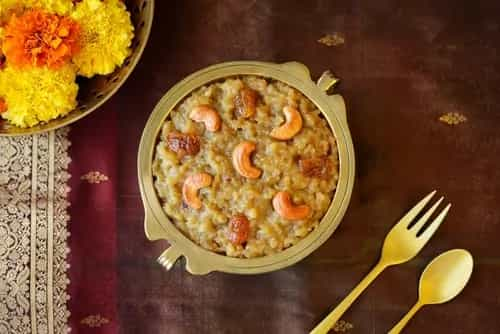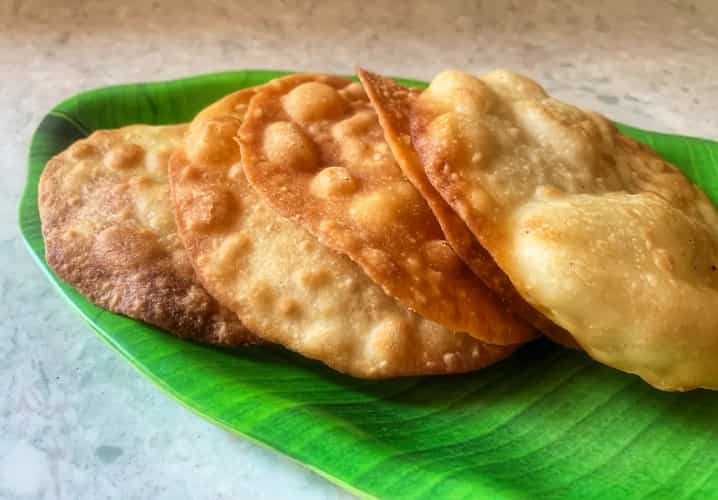In India, the festival of Dussehra, also known as "Vijayadashami," is observed by all Indians from Kashmir to Kanyakumari. It occurs on the tenth day of the Navratri festival and is observed in multiple ways around the nation, all of which have as their central message the triumph of virtue over evil. One of the most popular celebrations in India is Dussehra. Festive foods are a big part of celebrations, just like they are for most other events. These include dishes from different regions such as moong usal, sugar-dipped rasgulla and crunchy fafda, as well as sandesh made with khoya. Jalebi, kheer, and besan laddoo are traditional treats in North India, whereas yereyappa and payasam are made in the southern regions of the country.
Also read:

In southern states, festivities include going to temples, decorating one's home, and buying new cars or electronics. "Popular dishes prepared during this festival include alugadde palya (mashed potato sabji served with dosa or poori), baaledindina palya (banana stem sabji made with Bengal gramme and spices), and the well-known puliyogare (tamarind rice). A traditional South Indian salad is called kosambari. During holidays like Dasara and Ganesh Chaturthi, this traditional dish is prepared. Festivities would not be complete without sweets, and rava kesari, made with saffron, cashews, clove, pineapple, and ghee, is a must-have. Mysore Pak is one such dessert that doesn't require an introduction and has a royal tradition of being given following a lavish feast. A delicious bowl of payasam is a must-have for festivals and celebrations, and each region has a special method for making this amazing treat. The nutritious Pal Payasam, prepared with milk and nuts, is also offered as prasadam. Alugadde Palya is nothing more than a simple Aloo ki Sabzi made with utmost warmth and delight. Another traditional dish made with gravy that is favoured around Dasara is huli tovve. This dish is made with ridge gourd or sweet pumpkin, jaggery, tur daal, and tamarind. It is served with rice and is sweet and sour. To improve the flavour, some people also add pumpkin bits to it.
Books and other objects representing wisdom and wealth are offered to Goddess Saraswathi on Vijayadashami and then removed in a ritual called as poojayeduppu in Tamil. They mandate that students read at least one paragraph in each topic and encourage them to practise singing or playing an instrument in the hope that their talent would advance. There are many more sweet variants among delicacies. Traditional South Indian snack known as ambode goes under numerous names across the nation. This delicious recipe makes the ideal Dasara snack and is more commonly referred to as Dal Vada in North India. At home, people make sakkare pongal, kesari bhath, puran polior obattu, and riceor semiya, moong dal payasam among others.

The final day of Durga Puja falls on the same day as Dussehra for Bengalis. These days are significant: Shoshti, Shoptomi, Oshtomi, Nobomi, and Dashami. The main choices include macher chop, luchi, ghughni, aloor dom, mutton chop, and kobiraji. Bengalis love sweets, Rasgulla, pantua, sandesh, and payesh, as well as the traditional desserts channa jalebi, are therefore made and served to commemorate the Dussehra celebration. There is a dinner that brings back memories: bhoger khichuri, beguni/bhaja, cholar dal narkel diye. There is no other dal used during this celebration except the yellow dal.

Apart from Bengalis and Gujaratis, Maharashtrians also participate in the festival with enthusiasm. All of the guests are given "Kadakani," a type of sweet and savoury food, along with green chilli chutney in this state. Additionally, it is a Maharashtrian tradition to create miniature animals out of dough. Wheat flour is used to create tiny, animal-like sculptures that are burned in the havan kund. Dasmi is yet another dish served that day. Rice flour, peanut powder, and other components are used to make it. They are essentially nostalgic rice pancakes.

The celebrations on the tenth day also mark the conclusion of the nine-day fasting period in the majority of North Indian regions. It's time for a feast after a nine-day fast! In almost all the northern regions of India, people make jalebi, kheer, gajar ka halwa, besan laddoo and many other such sweet dishes to celebrate the festival of Dussehra. Not only sweets but people celebrate Dusshera with a superb selection of vegetarian cuisine too. Due to the auspicious nature of the day, rich vegetarian meals, or thallis, are enjoyed, often with desserts like motichoor ka ladoo or makhana ki kheer. While for non-vegetarians, this day is important since it marks the end of a fast.


